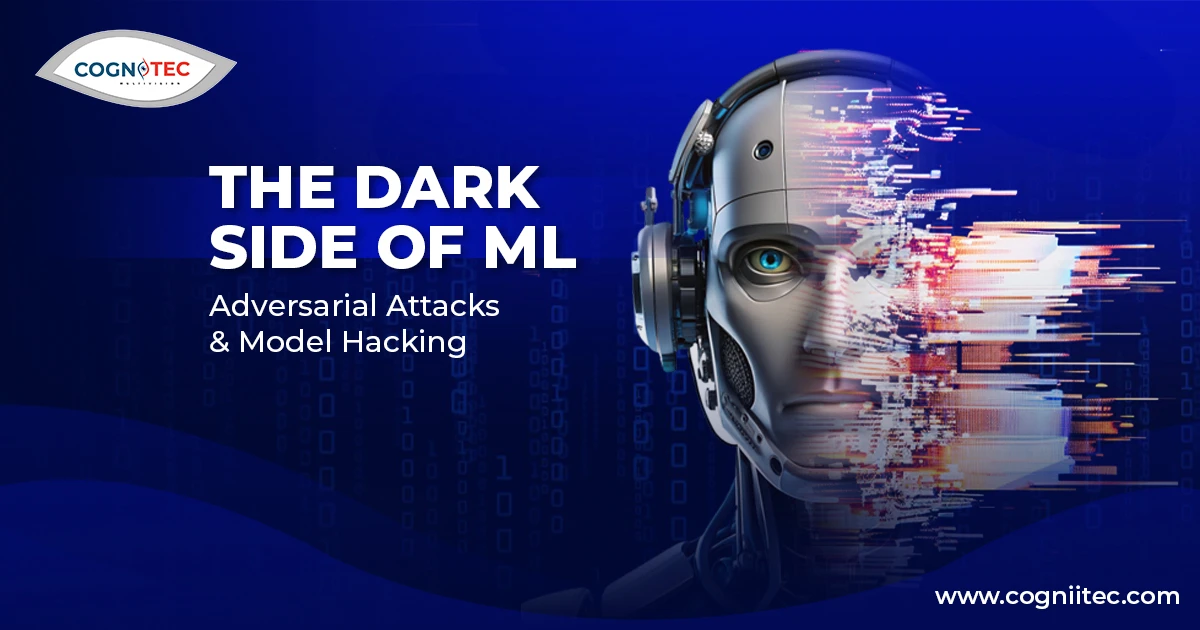
The field of machine learning has revolutionized industries by making predictions smarter, automating decisions and learning to be able to learn from huge datasets. However, there is a vulnerability of this power. Despite the intelligence of deep learning models, manipulation may occur by making minor manipulations with input data that are hardly apparent. This is their secret vulnerability, which forms the basis of adversarial attacks and model hacking, which is becoming an increasingly important threat during the era of artificial intelligence.
The idea of adversarial attacks
Essentially, adversarial attacks and model hacking presuppose the provision of AI systems with artificially designed inputs that perplex them. Instead of attacking systems with code or servers, which is the case in traditional hacking, adversarial manipulation uses the logical model itself. Mathematical optimization is a technique applied by the attacker to establish the minimum tweaks to the data so as to bring the highest disruption during prediction.
Facial recognition systems have a way to turn one person into another, which is a pair of glasses patterned on a strategic point. Such attacks also demonstrate a simple fact that machine learning models do not actually understand data, which are only pattern identifiers, and that patterns can be fooled.
Why Model Hacking Is a Big Issue
Such adversarial attacks and model hacking are not limited to academic inquisitiveness. Even the slightest manipulation may have catastrophic results in such industries as finance, healthcare, or autonomous driving. A fraud loan application may get through the verification systems. A medical scan can be labelled as the wrong diagnosis by an AI. Self-driving car is prone to misunderstanding road signs posing threats to lives.
The problem becomes more serious when AI models are incorporated in operations that are more critical. Models can even be reverse engineered by using queries, a method called “model extraction”. Through training an AI system continuously, they approximate the system and execute it, learning sensitive training methods or proprietary algorithms.
Protecting Against Threats of Adversarial Attacks
Technical and strategic countermeasures are needed to counteract adversarial attacks and model hacking. Researchers are working on adversarial training, in which models are subject to deliberately manipulated examples in the learning process in order to make them more resilient. Other ones use anomaly detecting layers that detect suspicious inputs, which are then processed.
Also, explainable AI (XAI) is turning out to be a necessary resource in identifying model flaws. Knowing the reasons behind the decisions that a model makes, the developers can know where they can be manipulated and minimize the chance of targeted attacks. But the realization of absolute defense remains a challenge until now with the attackers developing at a higher rate than countermeasures.
Ethical and Social implication
Outside of the technical nature of this, adversarial attack and model hacking also bring up their own ethical concerns. Whenever AI is applied in the surveillance system, during the recruitment process or in the justice system, manipulating its decisions can either increase inequality or lead to the harm of innocent people. Meanwhile, excessive protection of models by overprotecting them may decrease the transparency of models by forming black boxes that cannot be interrogated by users.
Fairness, accountability and security becomes an important consideration. Since AI is likely to gain access to more spheres of human activity, their reliability will not solely be based on their performance, but also on the possibility of manipulation.
The Road Ahead for Secure AI
Machine learning has a bright future in responsible deployment and a strong design. Creating resilient systems implies the acceptance that no AI model is invulnerable. The developers should consider security testing as a part of the model testing and should have clear monitoring systems in place after deployment.
Adversarial attacks and model hacking are vivid lessons on why care should be taken in the changing digital environment. The same intelligence that enables machines to learn may be used against them. The acknowledgement of this weakness is the initial step in the development of AI constructs that are not only clever but also safe, clear and dependable.
